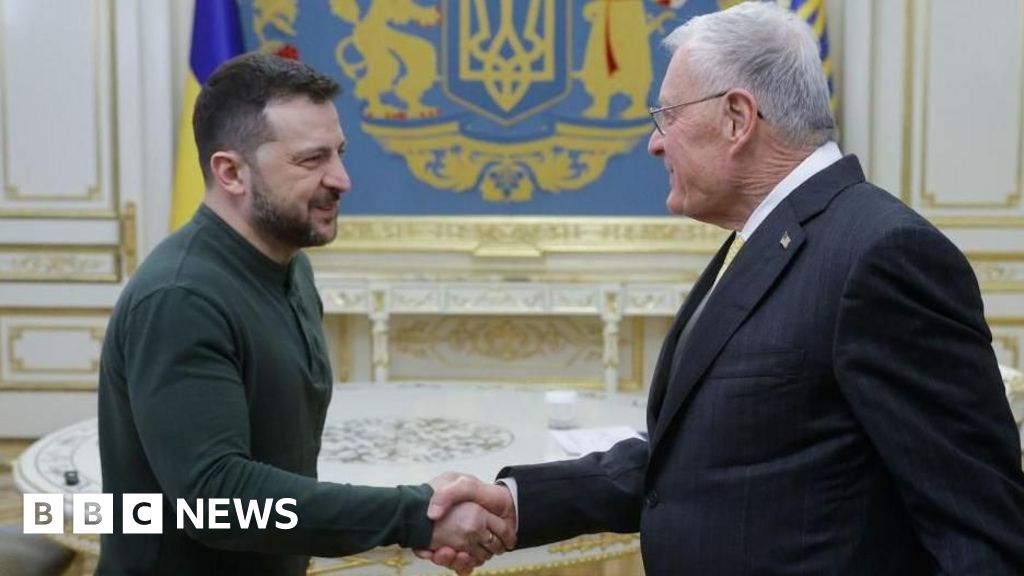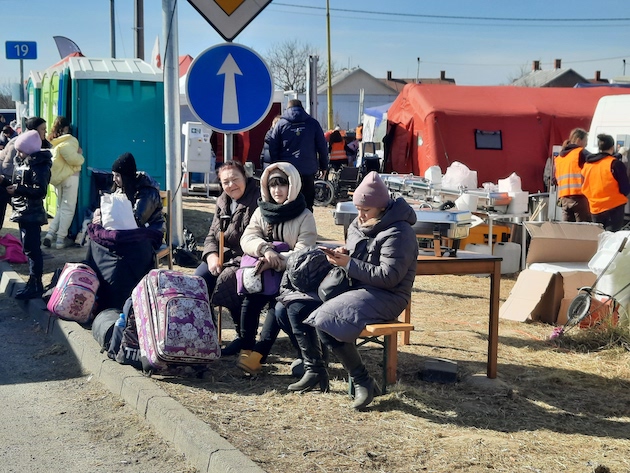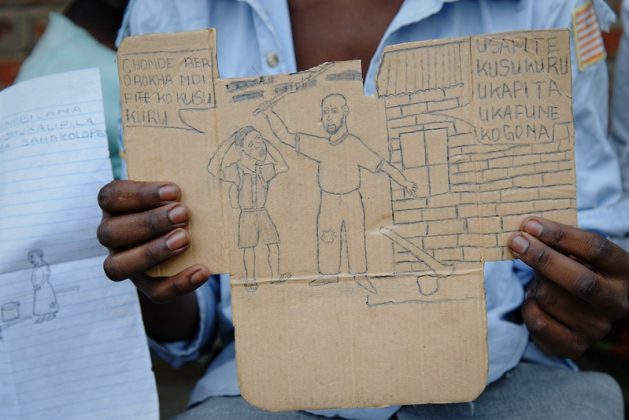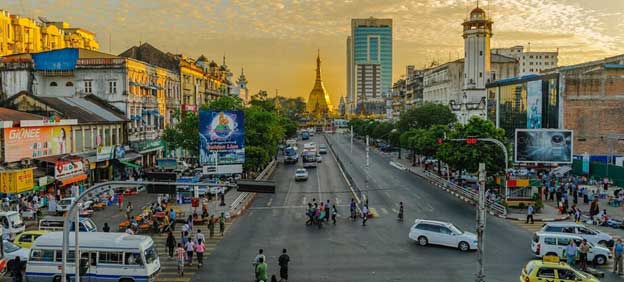‘Potential for new Myanmar’ as anti-coup forces push new northern offensive | Conflict News
On June 25, an explosion shook the town of Mogok, in Myanmar’s central Mandalay region, sending Hla Su and her family rushing for shelter in a nearby trench. Over the next three days, they waited underground for the fighting to stop, but it only got worse.
“When the explosions subsided, I cooked quickly, but I couldn’t eat well. I was overwhelmed by stress and fear,” said the 34-year-old, who is from Myanmar’s ethnic Bamar majority. “The sound of air strikes made it impossible to sleep.”
She decided to flee, stopping only to pick up the family dog when it chased her down the street. “At three months pregnant and with a 12-year-old child, I found myself carrying our pet dog in front of the motorcycle, riding through Mogok to Mandalay with tears streaming down my face,” she said. “This was the reality of fleeing.”
Like others interviewed, she is using a pseudonym due to the risk of military reprisals.
Hla Su is one of about 41,000 people who have fled their homes since a new round of fighting broke out in the Mandalay region and northern Shan State in late June, according to the United Nations, which says three million people have been forced from their homes Myanmar, most of them since the 2021 military coup.
Data collated by the Tai Student Union (TSU), a community-based humanitarian group, indicates that the number of displaced by the recent fighting in northern Shan State and Mandalay region may be closer to 100,000. The TSU also found that 141 civilians were killed and a further 100 injured from June 15 to July 18.
The latest battles mark the second phase of a wider offensive against the military, known as Operation 1027, which began last October. In the first phase, an alliance of ethnic armed organisations seized strategic territory along Shan State’s eastern border with China, in one of the most dramatic advances for groups opposing the military since the coup.
Now, resistance forces are fighting for control over an area stretching 280 kilometres (174 miles) from Mandalay to the city of Lashio, which serves as the military’s Northeastern Regional Command centre.
So far, forces led by the Ta’ang National Liberation Army (TNLA), Myanmar National Democratic Alliance Army (MNDAA), and Mandalay People’s Defence Force (PDF) have claimed control over Mogok, known for its lucrative ruby mines, and the northern Shan State towns of Kyaukme and Nawnghkio, among other areas.
On July 25, the MNDAA claimed it had taken control of Lashio; however, the fight for full control of the city, as well as the town of Kyaukme, appears to be ongoing.
According to Nathan Ruser, a geospatial analyst with the Australian Strategic Policy Institute, Operation 1027 now has the potential to establish a continuous pathway of resistance control from the Chinese border across the Ayeyarwady river through Myanmar’s central heartlands.
He said that the offensive represents advanced levels of coordination between ethnic armed organisations and PDFs formed after the coup, but also cautioned that its further success depends largely on the ability of northern Shan State’s ethnic armed organisations – some of Myanmar’s strongest – to peacefully resolve questions over power and influence among themselves.
“I think one of the biggest questions of this operation is how things will play out,” Ruser said.
Danger for civilians
Millions protested peacefully in the months after the coup, but the military responded with lethal force, triggering an armed uprising. PDFs, many of which now operate under the National Unity Government (NUG) of overthrown lawmakers and activists opposed to the coup, joined existing ethnic armed organisations to challenge a military armed by Russia and China, and have since claimed much of the countryside. Now, they are increasingly fighting for control over urban areas.

Operation 1027 marked the beginning of significant advances by resistance forces as the TNLA, MNDAA and Arakan Army (AA) quickly put the military on the back foot, before a China-brokered ceasefire covering northern Shan State saw a pause in fighting on January 12. A fragile peace held until June, when the military attacked TNLA targets from the air; on June 25, the TNLA and Mandalay People’s Defence Force launched simultaneous attacks.
According to Kyaw Ko Ko, the former chair of a national student union and current general secretary of Myanmar’s Social Democratic Party, while anti-coup forces face an uphill battle due to a disparity in weapons, they benefit from the support of the public. “The military council may have superior firepower, but the revolutionary spirit and morale of the revolutionary groups are significantly higher,” he said. “The assistance provided by the people helps reduce the challenges they face.”
Ohn Maung, an ethnic Ta’ang civilian and community volunteer, was in Kyaukme, midway between Mandalay and Lashio, when the fighting broke out. The town of about 30,000 people came under TNLA control on June 28, but as in other areas seized by resistance forces, retaliatory air strikes and shelling followed, and fighting for control over the town resumed soon after.
With the military blocking the movement of goods to areas with the presence of armed resistance groups and the fighting ongoing across northern Shan State, Ohn Maung is concerned that Kyaukme’s displaced civilians could face food shortages. “We want to provide rice and oil to the drivers … but we worry that they might get hit by bombs if they come to pick up supplies,” he said. “The military can also come and seize [the supplies] and the stall owners can be arrested.”
Kyaukme is also one of many areas where the military has restricted telecommunications networks since the fighting broke out. “Even if we know that a jet fighter is coming and we want to inform people to avoid an area, we can’t contact them,” said Ohn Maung, who spoke by phone from an area with some access. “With more injuries and food supplies running out, the local people are increasingly worried … We want this fighting to end quickly.”
It is a feeling shared by Mai Naing Naing, who is also using a pseudonym for security reasons. The ethnic Ta’ang civilian was not in his village in Nawnghkio township, 52 kilometres (32 miles) southwest of Kyaukme, when the fighting broke out, but found out from friends that shelling had damaged his house and injured his brother.
Resistance forces seized Nawnghkio on July 10; Mai Naing Naing told Al Jazeera that he wants peace, but sees only one outcome which could end civilians’ suffering. “I wish for the resistance groups fighting against the military to achieve their goal and win the war; otherwise, we will have to continue living in fear and worry,” he said. “Losing our homes and land is a great sorrow, but the main goal is to be free from military dictatorship.”
Another epicentre of the fighting is Lashio, where the MNDAA began its offensive on July 2. The city of more than 170,000 people has since seen some of the most intense urban warfare since the coup, causing major destruction of its residential wards as well as at least 38 civilian casualties, according to Shwe Phee Myay, a Shan State-based media outlet which collaborated with Al Jazeera for this report. In possible retaliation, the military has also recently bombed other areas which the MNDAA seized in January including the border city of Laukkai.
Seng Latt, an ethnic Kachin civilian who also asked to use a pseudonym because of the risks, took shelter in a church compound in Lashio when the fighting broke out. He told Al Jazeera on July 11 that he feared going outside due to continuous air strikes, drone attacks and shelling.

By then, tens of thousands of civilians had fled; although Seng Latt initially stayed behind to help others, he had second thoughts after his neighbourhood was shelled. “The constant noise and fear are overwhelming,” he said. “It’s clear that staying safe has become nearly impossible in Lashio.”
Fighting alongside the TNLA and MNDAA are several PDFs. Sa Nay Mine, an ethnic Ta’ang analyst, told Al Jazeera that the Mandalay PDF was particularly well-positioned to take significant territory, unimpeded by the geopolitical concerns faced by some of Myanmar’s northern groups.
“Unlike the ethnic armed organisations who might face pressure from China, armed resistance groups that emerged from the Spring Revolution are not subject to such influence,” he said. “If [the Mandalay PDF] can maintain their momentum, they could potentially control some parts of Mandalay region in the beginning of the next year.”
‘Constant fear’
As humanitarian needs intensify, so does the challenge of reaching affected populations. Although community-based organisations have typically led humanitarian responses in areas of northern Shan State that international aid groups have struggled to reach, local responders are now facing major challenges according to Vanda, an executive committee member of the TSU who is going by her nickname.
She told Al Jazeera that a combination of rising fuel and commodity prices, telecommunications shutdowns and roadblocks have posed significant obstacles to helping those in the conflict zone. “We’re losing contact and can’t transfer or withdraw the funds that we raised,” she said.
She also worries that her team members could be conscripted into an ethnic armed organisation or the military, or be caught in the crossfire of the conflict. “We can’t even know when or how heavy weapons or gunfire might fall near us, so we are carrying out our work under constant fear,” she said.
The fighting also has implications for other ethnic armed organisations in northern Shan State, several of which have not joined the country’s wider uprising against the military. At least four skirmishes have broken out between the TNLA and Shan State Progress Party/Shan State Army-North (SSPP/SSA), and on July 12, the SSPP/SSA moved into the northern Shan State town of Mong Yai, claiming efforts to promote regional stability and public security.

The United Wa State Army (UWSA), which maintains a ceasefire with the military and is considered to be Myanmar’s most powerful ethnic armed organisation, has also responded to the shifting dynamics in northern Shan State. Although it maintains autonomous territory along the China border and has so far refrained from open involvement in the country’s wider conflict since the coup, it began moving thousands of soldiers into the town of Tangyan on July 10.
A UWSA spokesperson told the local media outlet Myanmar Now that it took the action “at the request of local people, and after negotiating with the military council … to prevent the widening war from spreading.”
A local Wa civilian, speaking on condition of anonymity, told Al Jazeera on July 13 that UWSA soldiers had entered the town without a fight, and that both military forces and Wa soldiers maintained a presence. “[The UWSA] just entered for public security and for the public to be able to move freely,” he said. “It’s unclear what deals they might have made with the Burmese military, and I don’t know how long they will stay.”
On Saturday, the UWSA also moved personnel into Lashio. A spokesperson told the AFP news agency that the move sought to protect the group’s external relations office and property in the township.
Ruser, the geospatial analyst, said that while the ingredients for clashes between ethnic armed organisations exist, the groups have indicated a preference for resolving their differences through compromise and without resorting to violence. “I think there is a group mentality that this is the potential for a new Myanmar,” he said.
It’s a perspective that seems to be shared by Lway Yay Oo, the TNLA’s spokesperson. She told Al Jazeera in a phone interview that the group wants to address issues with other ethnic armed organisations peacefully. “We will have to find a solution as much as possible through negotiation, cooperation and dialogue,” she said.
Looking ahead, Ohn Maung, the civilian in Kyaukme, said he would like to see the TNLA and other resistance groups prioritise intercommunal harmony when administering territory under their control. “During the rehabilitation period, we want to request that everyone be treated equally, regardless of ethnicity or religion,” he said. “War is war. However, ethnic unity is also important, because we have to live together across our various communities.”
Shwe Phee Myay, a Shan State-based media outlet, contributed to this report.
Check out our Latest News and Follow us at Facebook
Original Source







